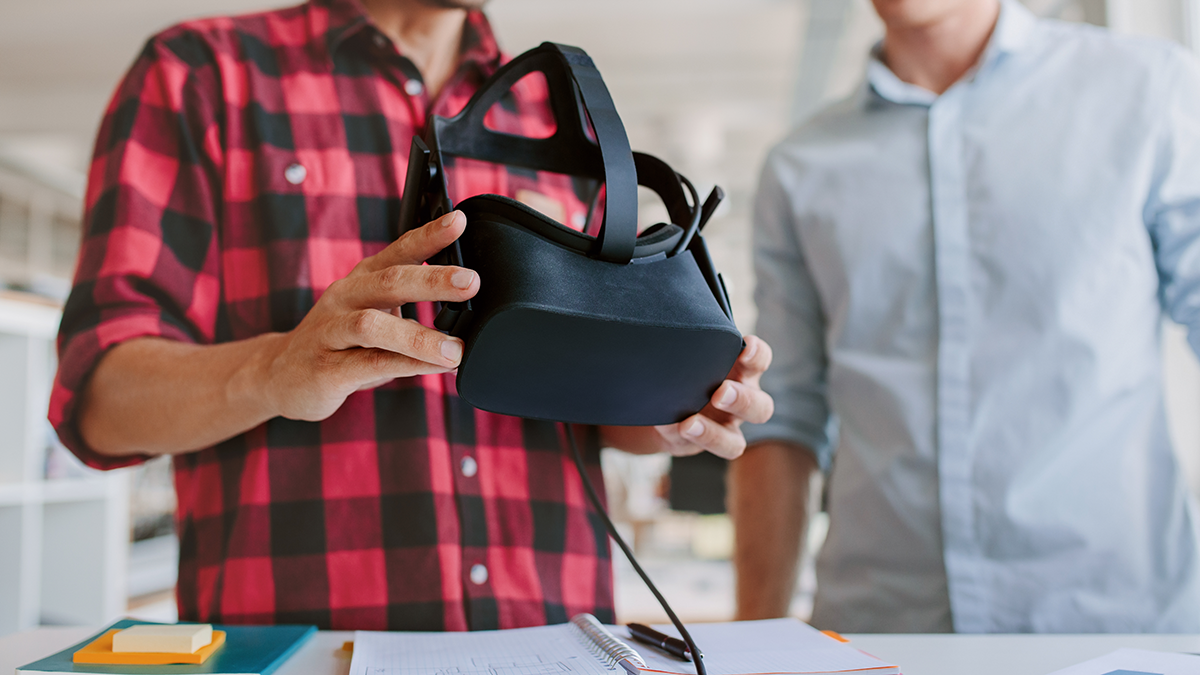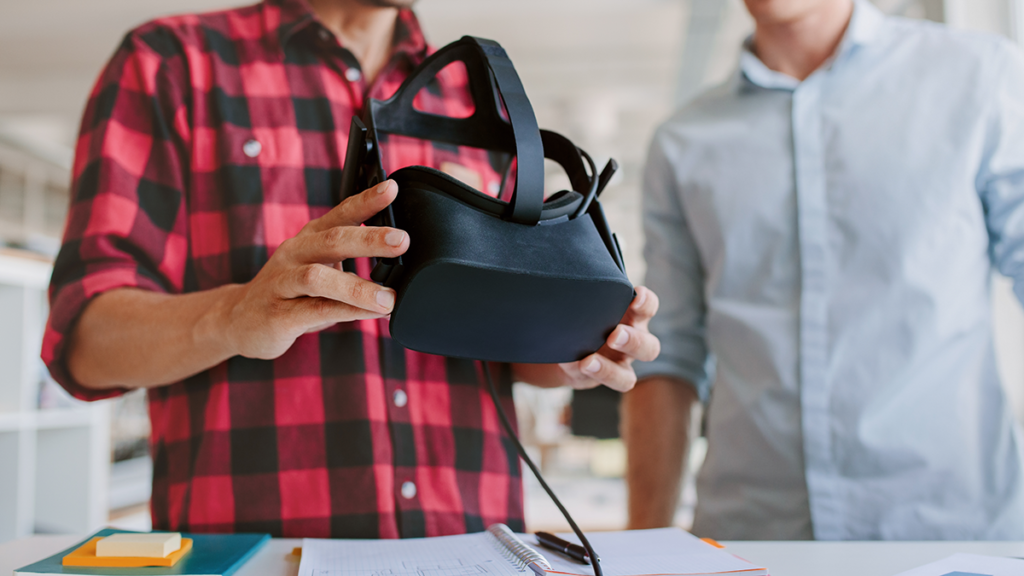
08 Jun The Metaverse Is Coming to Social Media
For most of us in countries with widespread advanced technology, no claim on our time has grown as rapidly as our online experience. That was up until about March 2020, when online experiences often emphasized play, social interaction, and information seeking (including shopping). Then, the pandemic forced millions of Americans and their desperate employers to turn the digital world of the internet into a vast workplace, a cyber economy. If there had to be interaction, as often as not it had to be virtual. Online shopping generated hundreds of millions of more package deliveries. Grandparents were introduced to their new grandchildren online.
At the same time, social media of every kind had to take the place of visits, meeting in restaurants, attending parties, appointments with health care professionals… Everything but walking the dog.
Reinventing Social Media Usage
As the body blow to the physical-world economy diverted shopping dollars to online enterprises of every kind, delivering windfall profits to Amazon and other online stores, it is not surprising that technologists and marketing thinkers began to wonder: What’s next for the vast world of social media? You had only to look at the trend of reinventing social media usage:
- Periscope and Meerkat paved the way for Live Streaming.
- Snapchat paved the way for Stories.
- Clubhouse just this year opened the door for social-audio.
- Facebook Horizon exists already but could become a larger initiative.
Even these few examples suggest how new technology and the innovative features it births on the internet inevitably migrate to the multi-billion-user social media gathering places.
Is the Metaverse Next?
What may be the “ultimate” (always a risky prediction) digital technology, the vision of the convergence of physical-world experience and digital experience—one reality with two universes—is the metaverse. What began as a sci-fi concept, then was adopted to name a new vision of technology, now comes up all the time in discussions of the future of social media and social media marketing.
As we briefly take our best shot at grasping the metaverse, which probably cannot yet be defined, keep in mind that this climactic experience, mediated digitally, would suggest equally transformative changes in how we use social media. As we strive to characterize this metaverse, keep imagining the shopper strolling through it.
Neal Stephenson used the term in his 1992 novel, Snow Crash, before a lot of today’s internet technology, social-media features, and concepts existed. Attempts to use the term with any precision—and in particular, trying to concretize what it would mean in practice—amount to a kind of game. The most likely reasons:
- There is no agreement that the metaverse exists, yet. It is not the internet and cellphones, or not only those; it is conceived as the interconnected, interactive sum of all digital experiences. Therefore, some say the metaverse does exist, but only as circumscribed by our technology available to support digital experience. The metaverse is an aspirational term to try to capture where the technology might someday go.
- There is no agreed-upon vision of the metaverse-to-come. But there is considerable agreement that it would be the whole world of digitally generated experiences. It would be virtual reality, but not VR as brief work and play experiences. It would be persisting, 3D, on a par with physical-world experience, and interactive with physical-world experience. (You wonder why there is no agreed definition?)
- The vision of a metaverse society and the individual in that society is controversial. Many declare it would be a dystopian nightmare. It would link all humanity, interconnect everything, make every single individual (and machine?) an equal actor. The exact same terms are applied by some enthusiastically and others grimly to characterize our metaverse future.
Where the Metaverse May Exist
It feels good, after this, to turn to something concrete. One way of looking at how the metaverse might evolve is to view apps and phones as 1D, Zoom as 2D, and the leading-edge games like Fortnite as 3D. Fortnite is a free-to-play Battle Royale game with game modes to include every stripe of the game player. Players can attend a concert, build an island paradise (or hell), or fight wars. The experience is immersive; the individual exists and acts in the digital world; the individual who returns to physical reality does not cease to exist in the digital world.
Oh, so the metaverse is a game? You turn it on, visit, and come back to reality to have lunch? The answer to that challenge by advocates of the technology is: Define “game.” At what point does the metaverse game constitute a world of experience, interrelationships, work, and play–all living memories–come to be continuous with the game of life?
The Shopper in the Social Media Metaverse
Let us just speculate about what shopping might be like when the metaverse comes to social media and social media marketing:
In the persistent, 3D, virtual reality of the metaverse, the experience of “digital” shopping would converge with the experience of shopping in brick-and-mortar stores. Stores have been moving in this direction on the web for well over a decade, of course, but what if the online shopper walks into the experiential equivalent of a physical store with the same experiences? And does this mean the end of brick-and-mortar shopping or its rejuvenation in a new reality?
To what extent will the further reaches of interactive and Augmented Reality, with the beginnings of sensory experiences, change the shopper’s interaction with the online merchandise? Feel it? Try it on? Take the car for a test drive? Heft the goods? I hesitate to mention tasting the cookies (I mean the baked kind of cookies), because I cannot imagine it. But I never imagined email, either.
We only can speculate, but likely to get a big jolt in the metaverse of shopping depends on trying out a new experience. Like test-driving a new car. Or enjoying the scenery on an offered cruise. Trying out the unbeatable new mattress? This can get intimate pretty fast, so I leave you to add to this list.
Last on my list of possibilities, but perhaps first in importance, might be shopping experiences that depend upon interacting with people. The pandemic got us used to thinking about online communication with our doctor, but in the metaverse that might be closer to the total experience of a visit. And the same with sales that usually require interacting with a salesperson (say placing an order for designing, printing, and manufacturing packaging for your new product).
Is it too soon for sales and marketing to start thinking about how to invest in the potential of the metaverse? In truth, thinkers about new marketing concepts and possibilities have been talking and writing about the metaverse for some time. If anything is true of the metaverse, it is that it will not spring into existence in one day—or one year. It is a first glimpse of a destination; each step of the way will offer new possibilities. Your black-and-white, wooden-box TV, with the 12-inch screen and three channels, carried advertising.
Those who exploited the new opportunity gained a head start on the competition. Those who kept thinking about the future shaped the medium itself and, ultimately, the world of TV advertising today.
We imagine it will be the same with the metaverse. But what do you imagine?
We want to share with you information and insights about social media marketing trends—tomorrow, next year, perhaps in the metaverse. To do so, subscribe to our newsletter below.
Subscribe to Social You Should Know








